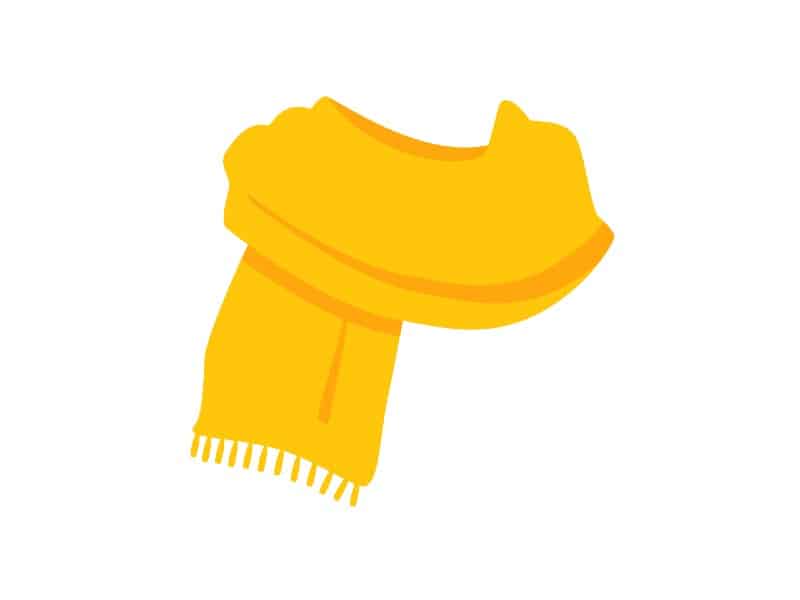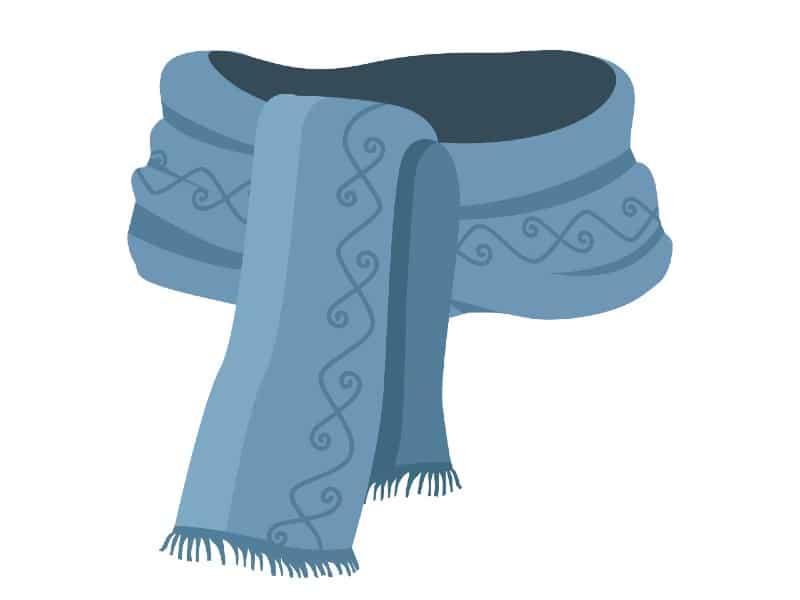 Source: https://easydrawingguides.com/how-to-draw-a-scarf/You might think that drawing a scarf is a straightforward thing to do until you actually come to draw one. In fact, scarves can be really difficult to draw, which may give you difficulty when it comes to art, especially in the winter.Everyone loves to draw snowmen in scarves, and lots of popular cartoons and art include scarves for their characters. If you’ve ever wanted to improve your scarf drawing skills, we’re now going to show you how to draw a scarf.
Source: https://easydrawingguides.com/how-to-draw-a-scarf/You might think that drawing a scarf is a straightforward thing to do until you actually come to draw one. In fact, scarves can be really difficult to draw, which may give you difficulty when it comes to art, especially in the winter.Everyone loves to draw snowmen in scarves, and lots of popular cartoons and art include scarves for their characters. If you’ve ever wanted to improve your scarf drawing skills, we’re now going to show you how to draw a scarf.
Materials
Before getting started, gather up:
- A sharp pencil
- Plain white paper
- An eraser
- A black fineliner
- Colored pens or pencils
Let’s get drawing! Make sure you have a flat surface and a comfortable chair.
 Step 1: Draw A Large Curve
Step 1: Draw A Large Curve
Sketch a curved line, with a long sweep on its lower edge and a tighter, shorter upright. This is going to form half of the outside of the scarf. You should always use loose, slightly wonky lines for your scarf in order to make it look natural; material rarely forms hard lines. We’ll call this Curve One.Next, sketch a smaller curve on the inside of this line, following roughly the same shape. This is the inside edge of the scarf, so it should follow approximately the same trajectory as your first line, staying the same width away from it for the whole curve. This is Curve Two.Add a third, smaller curve between the two, joining them (this does not need to be neat). This is the edge of the scarf. Try to make it overlap with Curve One a little, representing a fold in the fabric. This is Curve Three.
Step 2: Move On To The Second Half
On the other side, draw a shorter curve that meets or almost meets Curve One. This is the other side of the scarf. The top edge should be a little straighter and come up a bit higher. This will be referred to as Curve Four.Next, draw a second curve, as you did before; this is again the inner curve of the scarf. It should be about the same distance from Curve Four as Curve Two is from Curve One, and though it doesn’t need to touch Curve Two, it should look like a continuation of it. This is Curve Five.You are now going to add the outer edge of the second half of the scarf. This should come to a similar height as the top of Curve Three, and it should meet with Curve Four about two-thirds of the way down. This is Curve Six.If you imagine a character’s neck (or sketch one lightly in pencil), it would be between Curve Three and Curve Six. Make any adjustments you need to.It doesn’t matter exactly how these lines end up; these are just guides to help you get a good amount of lines in approximate places to represent a scarf.
Step 3: Join The Scarf Up
You are now going to join the scarf at the back. If you drew a neck representation in, you can now erase it.Lightly draw a wavy line between the tops of your two highest curves (Curve Three and Curve Six). This should dip down slightly, but will be mostly flat, forming the back edge of the scarf. This would not be visible if a person was inside your scarf, but as there isn’t, it may help to sketch it.Next, draw a parallel line below. This should represent the width you want your scarf to be. It will likely come lower than Curves Two and Four, meeting them at an angle (but not at their tips). If necessary, lengthen these lines a bit.This represents the way the fabric folds around at the back.
Step 4: Draw The First Hanging End
Scarves are usually depicted hanging down in front of a jacket. Put your pencil near the bottom point of Curve Five and draw a curve up over this line, and then sweep down, curving in and then flaring out for the bottom of the scarf.Draw another short curve up at the top, running roughly parallel to this, but stopping shorter. Draw another, a little longer, following the same sweep.Finally, draw a long line on the same curve. This should connect Curve Two and sweep down to Curve One, and then curl around to meet the flare you just drew. The bottom can afford to be a little squarer to represent the end of the scarf.
Step 5: Draw The Second Hanging End
Draw a second version of this, under-lapping it so that it appears to rest beneath the end of the scarf you have just drawn, but hangs down slightly lower. You can copy the same shape and angle; it should look approximately the same, though it doesn’t have to be identical. This is the other end of the tied scarf.You can adjust the angle of the end if you want to, but this isn’t necessary if you want to keep things simple. Show as much or as little of this second piece of fabric as you like.
 Step 6: Add Some Decoration
Step 6: Add Some Decoration
Erase any lines you are unhappy with and sketch any new ones you want to add now that you have a rough scarf shape. Next, add whatever decoration you like ““ the scarf could have tassels, stripes, spots, etc. If you want to color, this is the best time to add it. Alternatively, use your fineliner to get a beautiful, smooth outline.Remember to add folds to the fabric to show where it is bunched against clothes. To represent creases, draw one long line and then a couple of short ones. It’s best to have just one wave, rather than lots; this looks more realistic and satisfying.Creases are most likely to appear at the front, where the weight of the scarf ends is pressing down the fabric. If you are coloring your scarf, try to darken the creases a little.
Conclusion
You should now have a scarf sketch you can be proud of; this can be applied to pretty much any character you want to draw. It will suit a snowman, Santa Claus, or anyone else. Remember to use fluid lines to represent the softness of the fabric, and make your scarf unique with its decoration.
Comments
0 comments


